Test Clear Urine Review: Reliable Powdered Synthetic Urine for a Drug Test
In this post, I’ll be reviewing the Test Clear powdered urine kit. This product is marketed within the category of synthetic urine solutions.
As someone who uses medical marijuana, I occasionally face situations requiring urine screening. This leads me to research and understand various products available on the market, including synthetic options.
To give you a quick overview, this kit has its merits but also comes with some drawbacks. I’ll explore these points in detail below.
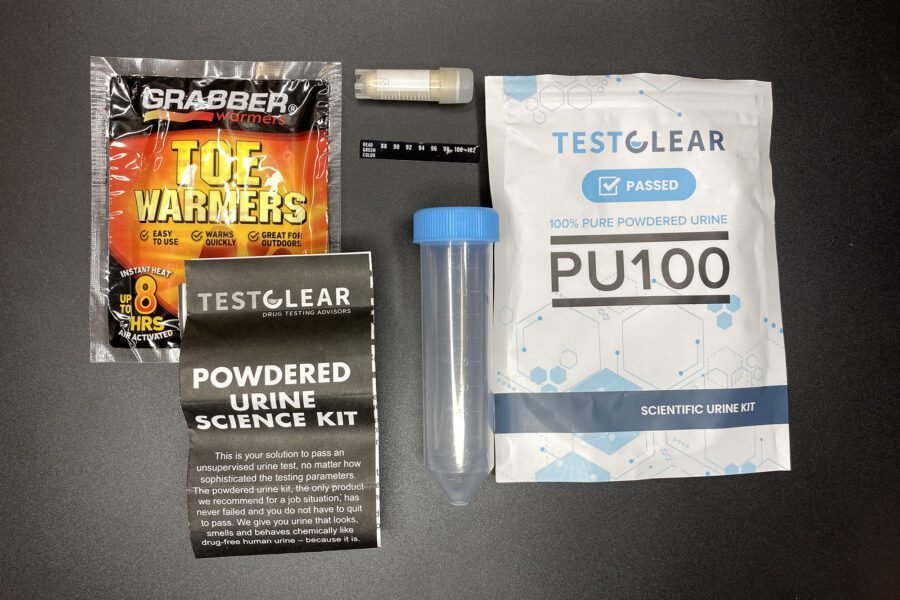
I acquired this kit from the Test Clear website for $60.
Here, I’ll outline the kit’s contents, share my observations, and discuss the manufacturer’s instructions for preparation. Understanding the nuances of these products is important.
Disclaimer: It is crucial to understand the legal and employment-related implications of using synthetic urine. Attempting to substitute or adulterate a sample for a legally mandated or employment-related drug test can lead to serious consequences, including legal penalties and job loss. This review is for informational purposes only and does not endorse or encourage any illegal or deceptive activities.
Kit Contents
First, I appreciated the prompt delivery; the package arrived the day after ordering.
The packaging was discreet – a plain brown box with no external branding, ensuring privacy regarding the contents.
Let’s delve into what’s inside.
The urine component comes in powdered form. The instructions specify mixing it with 50ml of water, stating a maximum of 75ml can be used. Let’s consider the volume.
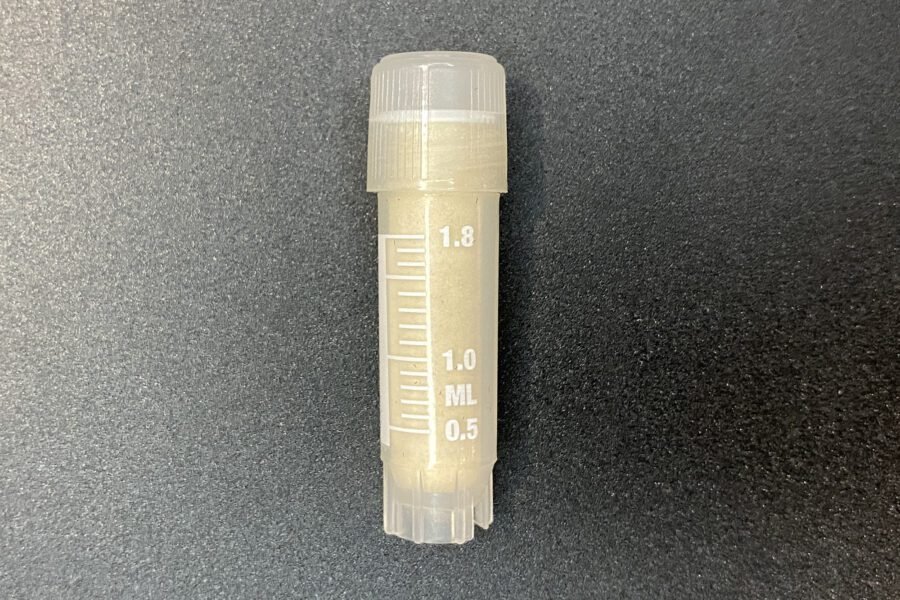
Standard urine screenings often require a minimum sample volume. For instance, many basic tests need at least 30ml, while DOT screenings require 45ml. Mixing the powder with 50ml yields enough for most standard tests. Using up to 75ml could potentially provide enough volume for one DOT screening or possibly two smaller volume tests, depending on specific requirements.
The instructions suggest that if you intend to split the use, you can mix half the powder with approximately 35ml of water. The mixing bottle includes markings to aid in measuring the water accurately.
The bottle provided is cylinder-shaped, which differs from the flatter bottles included with some other synthetic urine brands. This isn’t inherently problematic.
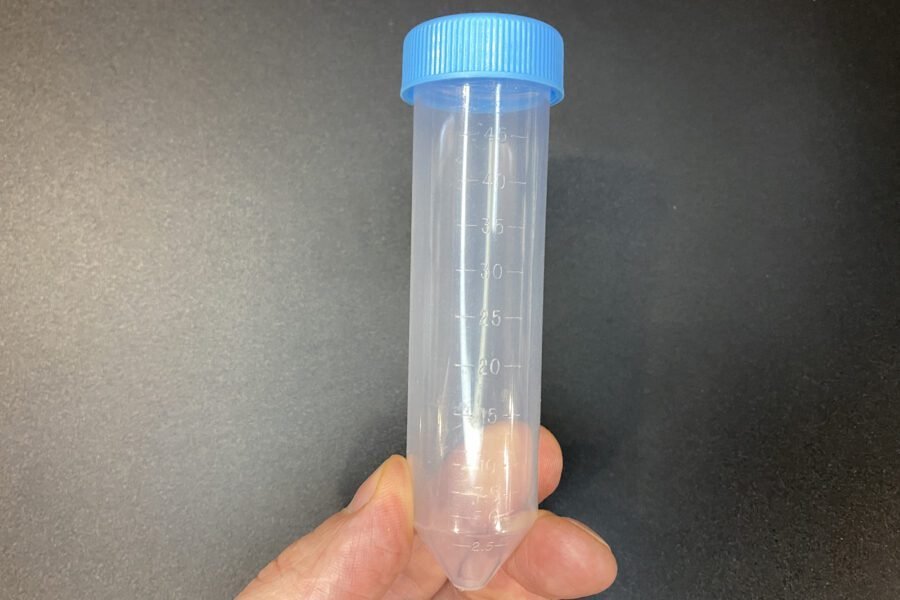
I tested its fit by placing it in the crotch area, and it seemed manageable. However, its shape might be less ideal if using a stash leg belt, as I’ll touch upon later.
The bottle cap secures tightly, reducing concerns about leakage during handling.
For temperature management, the TestClear kit includes two toe warmers. This allows for potentially two separate uses or having a backup warmer.
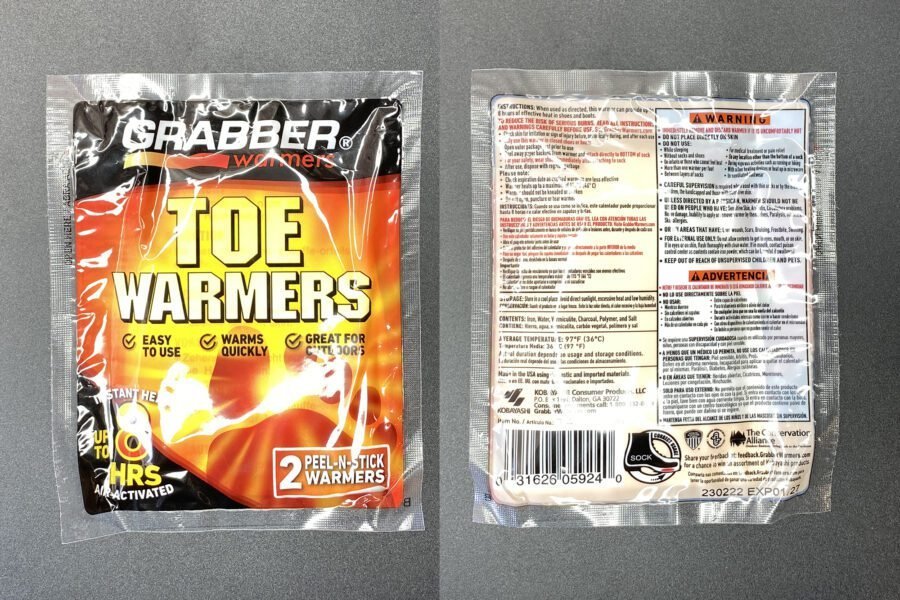
These warmers activate upon exposure to air and typically heat up within about 15 minutes. They are designed to produce heat for up to 8 hours, which could be helpful if the exact timing of the screening is uncertain.
The warmers feature an adhesive backing for attachment to the bottle. However, I observed that due to the bottle’s round shape and the warmer’s flat, less flexible nature, achieving a secure fit can be tricky, and the warmer might tend to detach. I found that using an elastic band helps keep the warmer firmly in place.
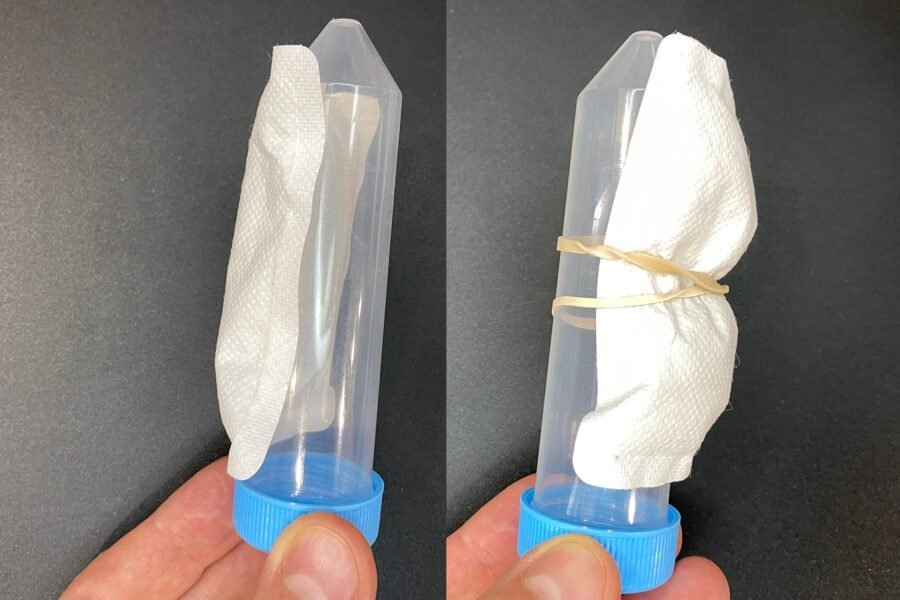
The kit also contains a temperature strip for monitoring the liquid’s temperature before potential submission. This strip is separate and has an adhesive backing, allowing you to apply it to the bottle when needed. Maintaining the correct temperature range (typically 90-100°F or 32-38°C) is critical for sample validity checks.
The instructions provided are clear, with illustrations for each step. Test Clear also offers phone support, which is a positive aspect for users seeking assistance.
Cons: What I Didn’t Like About the Kit
Now, let’s discuss some aspects of the kit that I found less than ideal.
The cylinder shape of the bottle, while functional, presents some practical challenges.
Firstly, as mentioned, the heating pad doesn’t conform well to the round surface. I strongly recommend using an extra rubber band to secure it properly. Failure to maintain temperature can invalidate a sample.
Secondly, if using a device like a stash leg belt for transport, the cylindrical bottle tends to create a more noticeable bulge compared to flatter designs. It might also rub uncomfortably against the other leg. However, this is less of an issue if carrying the bottle within closer-fitting undergarments.
I also noted that the temperature strip included was different from the one pictured on the website’s product description. This isn’t necessarily a functional drawback, but it’s an inconsistency worth mentioning.
Finally, the volume provided raises cost-effectiveness questions. If a screening requires only 30ml, the kit offers good value, potentially allowing for two uses if carefully divided. However, for screenings demanding 45ml (like DOT tests), the entire kit yields only a single use. This makes it relatively expensive compared to other options that might offer larger volumes or features for a similar price point, such as the Incognito Belt which provides a different delivery system.
Understanding TestClear Powdered Urine and Screening
Will this product meet the requirements for various urine screenings, including those conducted by Labcorp or other laboratories?
The manufacturer claims that TestClear powdered urine is formulated to mimic the characteristics of human urine, containing typical components like urea, uric acid, and balanced pH, creatinine levels, and specific gravity. It is designed to be free of drug metabolites. Laboratories conduct validity tests to ensure a sample is consistent with human urine before proceeding with drug screening. Products like TestClear aim to meet these validity criteria.
Can TestClear Powdered Urine Be Detected?
Concerns about the detection of synthetic urine are valid. Here’s a look at the methods laboratories might employ:
Validity Testing: Standard procedure involves checking temperature upon collection, pH, specific gravity, and creatinine levels. Samples outside the normal human ranges are flagged. Labs also check for common adulterants (substances added to interfere with tests).
Advanced Testing (LC-MS/MS): Liquid chromatography coupled with tandem mass spectrometry (LC-MS/MS) is a highly sensitive technique capable of identifying specific molecules. Some labs may use it to detect unique endogenous biomolecules found naturally in human urine. The absence or abnormal levels of these markers could potentially indicate a non-human sample. However, this method is complex and costly, generally reserved for specific situations rather than routine screening.
Commercial Test Kits: Some specialized kits (e.g., Test True SU, mentioned in the original article) are designed to detect specific markers or preservatives allegedly used in some synthetic urine formulations.
TestClear asserts that its product is formulated to pass standard validity checks and does not contain the specific ingredients targeted by common commercial detection kits. However, it’s important to recognize that laboratory testing methods continually evolve.
Using synthetic urine carries inherent risks. If a lab suspects a sample is not genuine or has been tampered with, it will likely be rejected, potentially leading to serious consequences depending on the context of the test (e.g., employment action, legal repercussions).
Is TestClear Powdered Urine Actually Real Dehydrated Urine?
It’s important to clarify that TestClear powdered urine is a synthetic product, not dehydrated human urine. The manufacturer states it is formulated using components found in human urine, such as urea, uric acid, creatinine, and balanced electrolytes, to match the chemical profile.
They also mention its use in calibrating laboratory testing equipment, suggesting it meets certain standards for mimicking urine properties required for such applications. While not actual human urine, the formulation aims to replicate its key characteristics for validity testing.
Preparation and Handling of TestClear Powdered Urine
Following the manufacturer’s instructions is crucial for proper preparation. This process takes approximately 5-10 minutes.
Warning: Misrepresenting a sample during a drug screening process is illegal in many places and can have severe employment, legal, or personal consequences. Users should be fully aware of the risks and regulations in their jurisdiction.
1. Dissolve the Powder: Pour the powdered urine from the vial into the 50 ml mixing tube. Fill the tube to the top mark with clean water (bottled or distilled is recommended over tap water to avoid potential contaminants).
2. Secure the Cap: Screw the blue cap on tightly. Gently invert the tube to check for any leaks.
3. Mix Thoroughly: Shake the tube vigorously until the powder is completely dissolved, resulting in a liquid resembling urine.
4. Attach Temperature Strip: Apply the adhesive temperature strip to the side of the 50ml tube for easy reading.
5. Heat the Solution: Open one heater package. Peel the backing off and stick the heater to the tube, ideally on the opposite side from the temperature strip. The goal is to warm the solution to body temperature (90-100°F or 32-38°C).
6. Transport and Temperature Management: Careful handling is needed to maintain the correct temperature until the point of screening. Body heat can help maintain the temperature once the warmer has brought it into range. Products like belts or secure undergarments are sometimes used for transport, but concealing items may be prohibited or scrutinized during testing procedures.
7. Monitor Temperature: Before submitting any sample, check the temperature strip. It *must* read within the acceptable range (90-100°F / 32-38°C). Samples outside this range are typically rejected immediately.
8. Transfer (If applicable): If proceeding, carefully pour the prepared liquid into the collection cup provided at the testing facility. Avoid spills and noise.
Practicing with Water
The manufacturer suggests practicing temperature management with water. Fill the tube with warm water (slightly above 100°F) to activate the temperature strip. Observe how it reads and practice cooling it slightly (e.g., by gentle blowing) to bring it into the target 90-99°F range. This helps familiarize you with the strip’s indicator and how the liquid cools, which is useful if the solution slightly overheats.
Test Clear Urine vs. Sub Solution
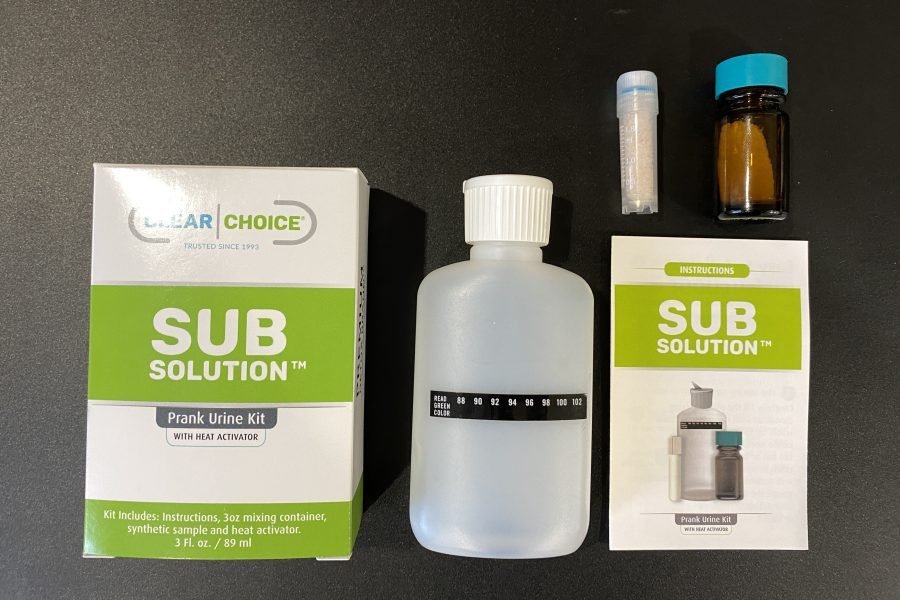
Both Test Clear and Sub Solution are powdered synthetic urine products claiming high quality.
Sub Solution also provides a formulation intended to mimic human urine characteristics. A notable difference is its bottle design, featuring a flip spout cap, which some find more convenient for pouring.
Sub Solution typically doesn’t include heat pads. Instead, it comes with a heat activator powder. This powder raises the liquid’s temperature rapidly when added and mixed. While effective, using it discreetly within a testing facility restroom might pose challenges. Users might need separate heat pads or rely solely on the heat activator and body heat.
Sub Solution generally costs more ($90). Comparing the two, Test Clear offers a simpler package with heat pads included, potentially representing better value for those prioritizing cost-effectiveness over features like the heat activator or specialized spout.
Test Clear Urine vs. Quick Luck
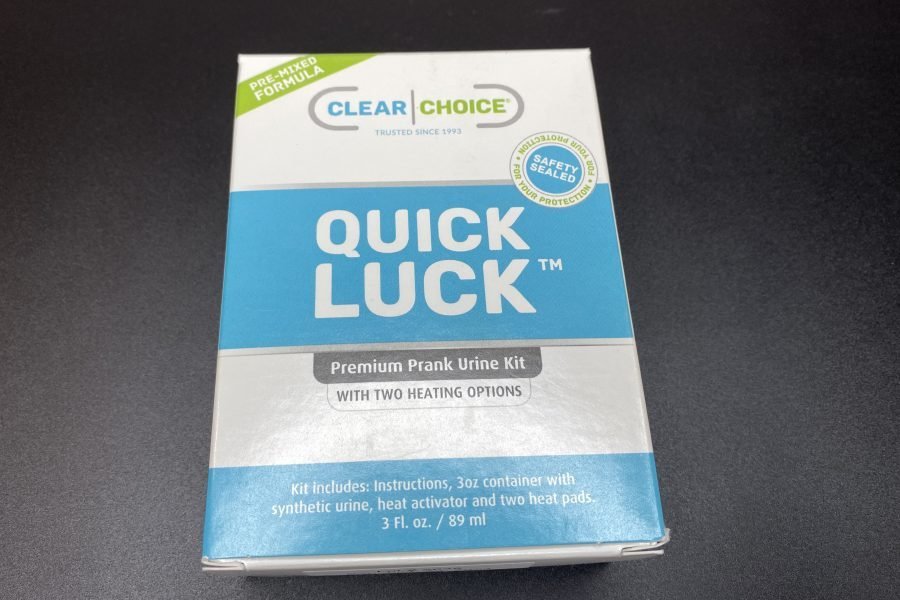
Quick Luck is another product in this category, often positioned as a premium option. Unlike Test Clear and Sub Solution, Quick Luck comes pre-mixed. It typically provides around 3 ounces (approx. 90ml) of liquid. If only part is used, the manufacturer advises freezing the remainder to maintain stability, which adds a step for future use.
Similar to Sub Solution, Quick Luck features a user-friendly bottle with a convenient flip spout cap.
Quick Luck kits usually include both heat pads *and* the heat activator powder. This offers flexibility: use the heat activator for rapid heating and the heat pad for sustained temperature maintenance.
Priced around $105, Quick Luck is positioned higher than Test Clear and Sub Solution. Its pre-mixed nature and inclusion of both heating methods might appeal to users seeking maximum convenience, despite the higher cost.
About the Manufacturer: TestClear
TestClear positions itself as a provider of various drug testing solutions and related products. Their offerings include detox products (drinks, shampoos) and synthetic urine kits like the one reviewed here. The company markets its products for individuals needing to navigate pre-employment or random drug screenings, mentioning compatibility with major labs like Quest Diagnostics and LabCorp procedures.
TestClear emphasizes product quality, clear instructions, and customer support. They also highlight confidentiality in their services. Based on user feedback often found online, they appear to have a generally positive reputation within their specific market niche.
It’s important to note that the primary market for products like TestClear’s powdered urine revolves around individuals seeking to substitute samples during drug tests, an application fraught with legal and ethical issues.
Conclusion
The TestClear powdered urine kit presents itself as a budget-conscious option within the synthetic urine market. Its formulation aims to meet the standard validity checks used in urine screenings.
However, its value proposition is somewhat diminished by the volume provided, especially if facing screenings requiring 45ml or more (making it a single-use kit). The cylindrical bottle and the fit of the included heat warmers are minor practical drawbacks that require workarounds (like using a rubber band). Preparation is required, unlike pre-mixed options.
For users seeking more features, convenience (pre-mixed solution, heat activator), or integrated delivery systems, alternatives like Quick Luck or the Incognito Belt exist, albeit at higher price points.
Final Important Considerations: Anyone considering the use of synthetic urine must be aware of the significant risks involved. Substituting or tampering with a urine sample for a drug test can lead to severe consequences, including termination of employment, loss of professional licenses, and potential legal action, varying by jurisdiction and testing context. Laboratory detection methods are continually improving. Always consider the legal and ethical ramifications and explore legitimate alternatives for addressing drug testing requirements. This review provides information on a product but does not constitute an endorsement of its use for deceptive purposes.
